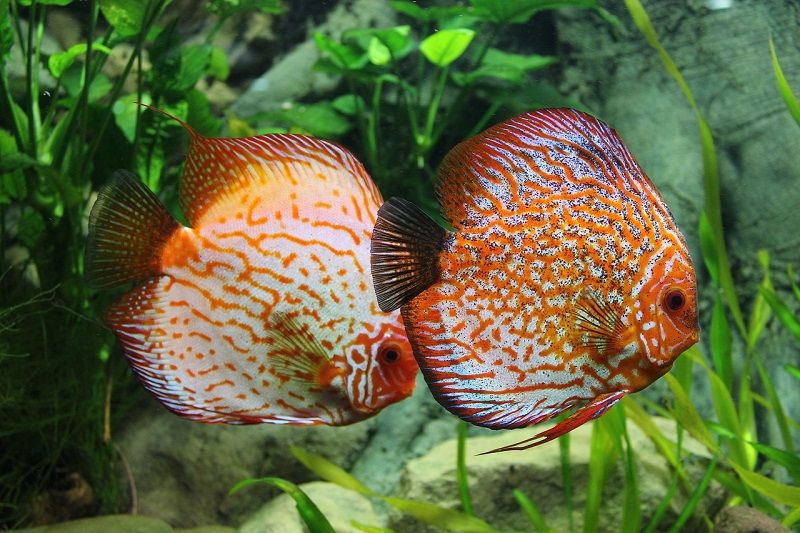A fish needs a fresh/clean environment to thrive in every week, and that is why an aquarium filter came into the picture. But enough praises; the filter may fail to deliver the job it was intended if it’s clogged with filth over time. That is why, regardless of whether it’s one of the best canister filter designs in the market, cleaning the filter is one step to getting it back to working correctly again. It is not any hard cleaning your best turtle tank filter anyway.
When and How to Clean Aquarium Filter

Do you have any idea about when to do this exercise? Well, most aquarists delay, at least one week after they cleaned the fish tank, and that is when the fish would have adjusted to the new environment. One thing you should know is; the fish gets affected each time you subject it to a new environment, and it is considered as a shock to its system that usually disrupts its water & routine.
Furthermore, not all best aquarium canister filter models use the same cleaning mechanism. So, you will need to understand that the type of filter you’re using and judge the cleaning method. You can confirm with your product manual whether you have specific directions for cleaning your model. That way, you can embark on the tips we have enlisted for cleaning the various filters in existence.
How to clean the various canister filter designs
Since you have the basic concept behind cleaning the aquarium filters, the next challenge is how exactly to go about it. Getting rid of the accumulated rotting organic material and debris is a delicate process, and safeguarding the beneficial bacteria from leaving the aquarium tank is one process at hand. You should avoid using hot water, soap, or any bleaching detergents since they will collapse your biological filtration system.
#1 Cleaning Mechanical Filters
For those with mechanical filters, you will find a sponge or a pad that will be sitting inside it. These make the main components used in the filtration of the aquarium water. To clean it, these are the steps one needs to adopt:
Scoop out some water
You don’t need so much water, just two cups are enough to initialize the first step. In that case, use the water inside the existing tank if you care so much about your fish and not distilled or tap water. As much as the filter may not invoke any fresh smell, your fish will be less sensitive to the changing environment. Therefore, use your siphon to draw as much water as you will need, then drain it to a small mixing bowl or any medium-sized bucket.
Unplug your filter
If you are scared of getting an electric shock, then make sure you have the mechanical filter unplugged from the power. This step is significant before you start cleaning the filter media. You can take it off your tank to make it a little easier. Furthermore, if you want to save your floor, have an awaiting bowl or a bucket to collect trickling water from the main reservoir.
Clean the pad or sponge
Since you do not want your fish to have filter-less water for long, this step should be done quickly and is painless. You have set your bowl of water readily assembled; now you have to wash off all the gunk of the sponge with your hands and the help of the water. Squeeze it and ensure all the beneficial bacteria have not been scooped out of the pad. These beneficial bacteria play a significant role in protecting the fish from the effects of ammonia in the water. Wash the sponge until the water running through it is clear. Some people may find it icky touching the aquarium water with their hands; use gloves instead, or you can make your friend do it or you.
Scrub the tubes and casing
Cleaning the sponge or pad is not the end of the process; the other parts of the filter also need to touch the water too. This can be done using the leftover water in the bowl. The only extra cleaning agent you need to use is the filter cleaning brush, which you can find it from most supply stores. This type of brush can reach spots conveniently and effortless.
Return the sponge/pad
Now that you have your filter readily clean, it’s time to get it back to the fish tank. Also, return the water used to clean the filter media back to the tank too. Make sure the water is not crawling with gunk before you return it. Immediately afterward, you can restart the filter once again.
Note: if you feel your sponge is filthy, you may consider replacing the media; however, it is not certainly encouraged unless it’s absolutely necessary. It’s not like the case of subjecting the best turtle tank filter to replacement as a whole.
#2 How to clean Chemical filters
The carbon needs to be swapped on a regular basis to ensure the water tank does not turn out cloudy. Usually, this is done on a weekly basis or when the tanks begin to show signs of murky water. The guidelines have been indicated by the manufacturer procedures and deliver clean water to your fish environment.
#3 Cleaning biological filters
The biological filter also needs to be cleaned from time to time; however, their frequency is not as much as that of the mechanical filter. This has been characterized by the urge to retain the delicious and skimming bacteria. Mostly, you do not have to clean it much, just a quick once over with the aquarium water is enough to get it over with. Use the steps as outlined above, then put it back.
With all these steps, do not forget to test whether the filter is functioning correctly. Otherwise, if it’s not, check for clogs or confirm with the manufacturer’s manual to be on the safe side. However, if things still ain’t working for you, call the manufacturer for more advice.
Final thought
Now that you have the best aquarium canister filter readily clean, the only thing waiting is the peace your fish will enjoy before the next clean-up. It is essential to observe the processes keenly to ensure the parameters have been maintained. Cleaning is simple, and the best turtle tank filter has a straightforward procedure outlined for you.
